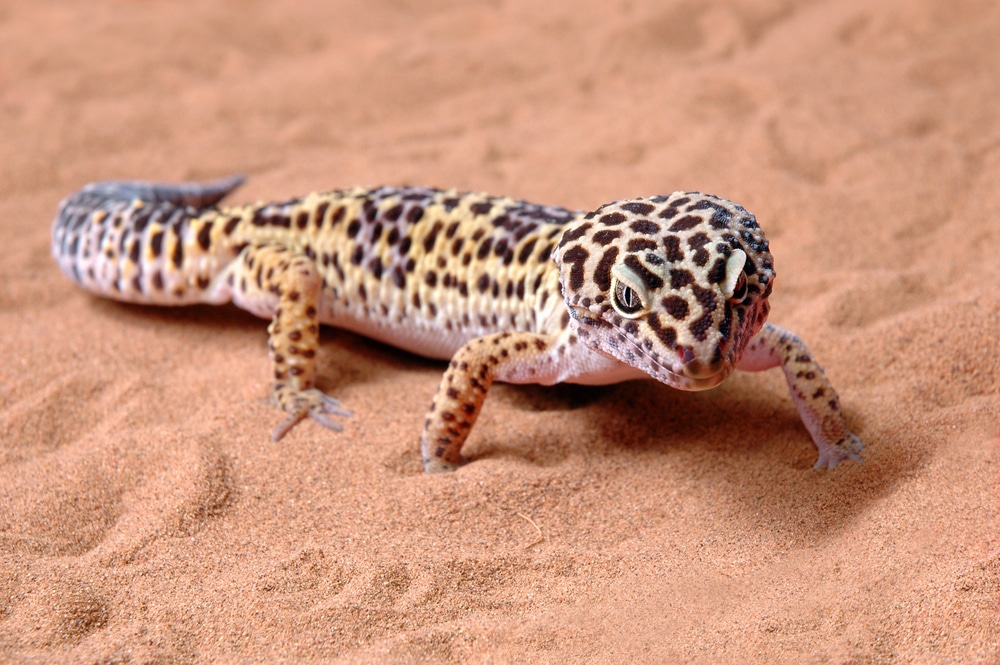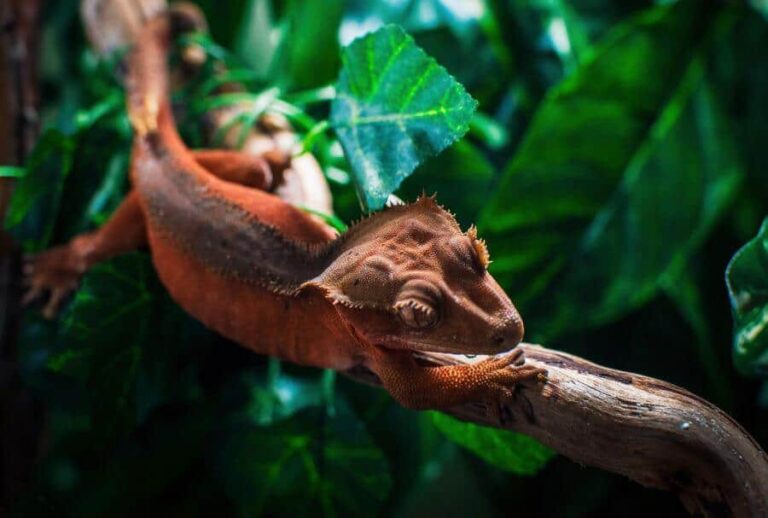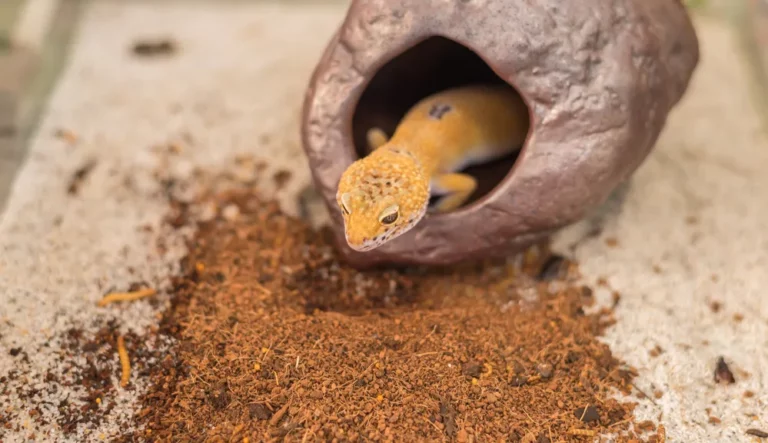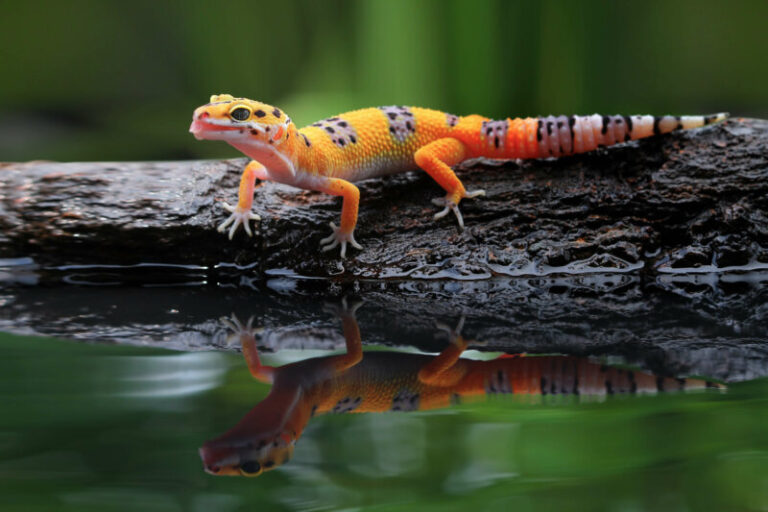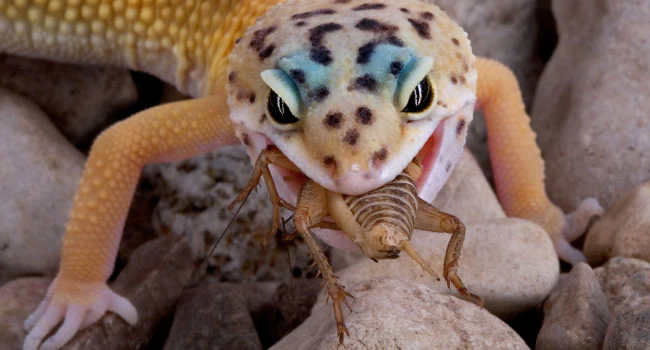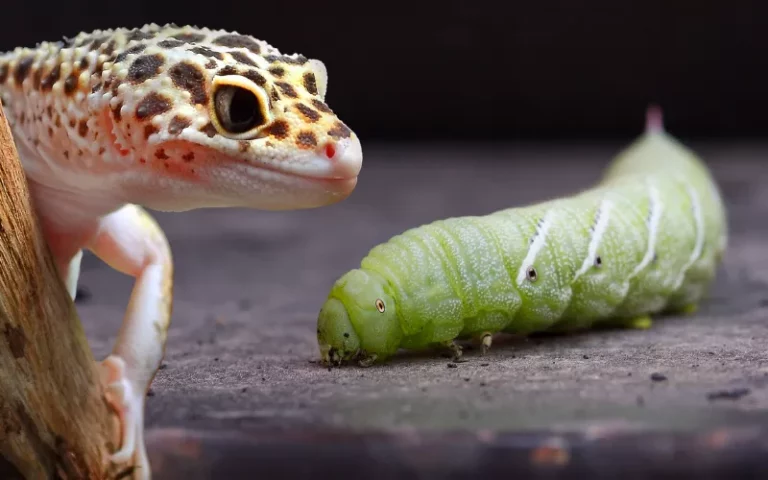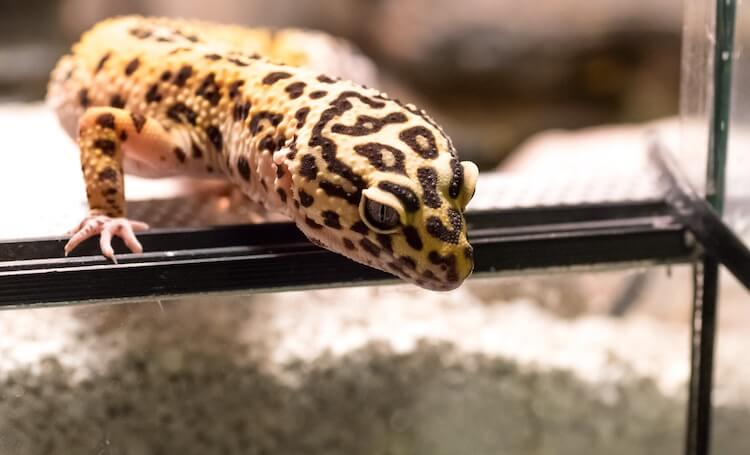Is Sand Good for Leopard Geckos? A Closer Look at a Common Debate
As a passionate reptile enthusiast, I vividly remember the day I brought home my first leopard gecko, Leo. With his captivating spotted patterns and mesmerizing eyes, he quickly became the centerpiece of my room.
Eager to provide the best care for my new scaly friend, I began diving into the intricate world of leopard gecko husbandry. However, one question seemed to divide the reptile community like no other: “Is sand good for leopard geckos?“
No, Sand is unsafe for them because they can accidentally eat it and get calcium, while hunting for food, leading to digestive problems and impaction. This risk is particularly high for juvenile geckos,
Join me as we delve deep into the intricacies of care. Let’s start.
Types of Sand Substrate for Leopard Geckos
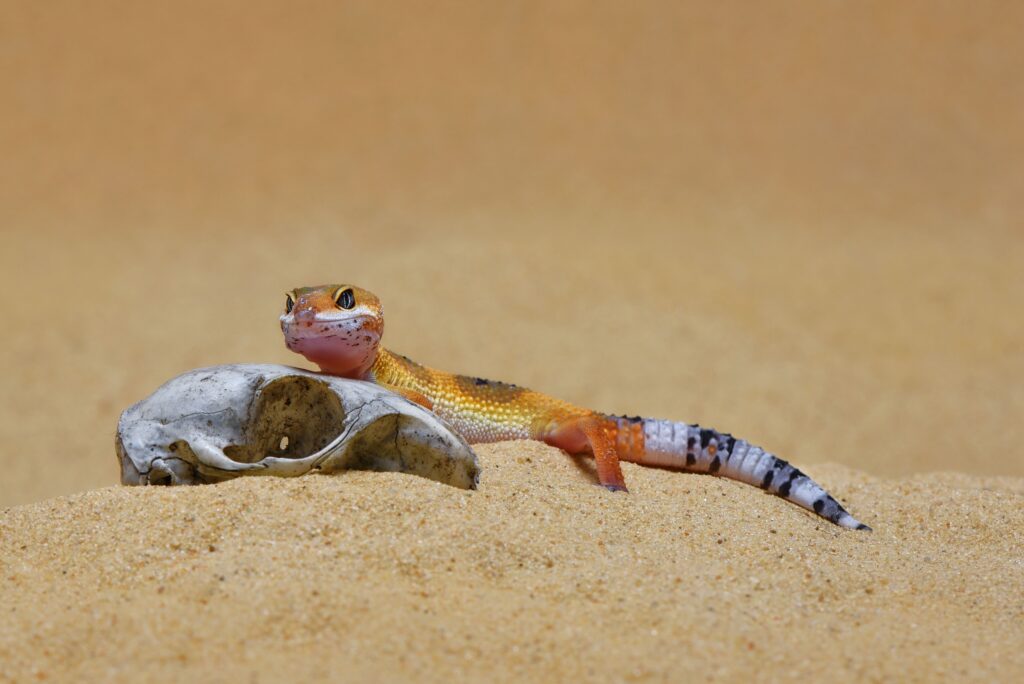
Calcium Sand: It is also known as calcium carbonate sand, and is a popular choice for leopard gecko substrate. It is marketed as a safer option because it contains calcium, which can be beneficial for health. However, as mentioned earlier, it can still pose risks if ingested in large quantities.
Fine-Grain Sand: another type that some reptile keepers use for it. It is believed to pass through the digestive system more easily if ingested. Unlike calcium, it is not as appealing in taste, reducing the likelihood of consumption.
Play Sand: It is a common substrate used in children’s sandboxes and is sometimes considered for leopard geckos. It is typically finer in texture and may be easier to clean. However, it still carries the risk of impaction if ingested.
Desert Sand: Some keepers may use natural desert sand as a substrate. This is similar to what you might find in gecko habitats in the wild. However, it can be challenging to maintain proper cleanliness with natural thing, and it may carry impaction risks as well.
Benefits of using sand as a substrate
Aesthetic Appeal: It can create a natural and aesthetically pleasing habitat, mimicking the gecko’s native desert environment. Many reptile keepers appreciate the visual authenticity it offers.
Natural Behavior: Also, allows leopard geckos to exhibit natural behaviors, such as digging and burrowing. This can provide mental and physical stimulation for the geckos, contributing to their overall well-being.
Thermoregulation: Further, can help maintain temperature gradients in the enclosure. Leopard geckos are ectothermic, meaning they rely on their environment to regulate their body temperature. Then, it can offer a comfortable and adjustable surface for them to bask or cool down as needed.
Environmental Enrichment: Some keepers argue that it provides environmental enrichment by allowing geckos to engage in digging and burrowing activities, which can be mentally stimulating.
Calcium Availability: Certain types of sand, such as calcium sand, contain added calcium carbonate. This can potentially benefit the gecko’s health by providing a source of dietary calcium when ingested.
Risk of using sand as a substrate
Impaction Risk: Ingestion of sand can lead to impaction, a potentially life-threatening condition characterized by digestive blockages and symptoms such as lethargy, loss of appetite, bloating, constipation, and the need for surgical intervention in severe cases.
Respiratory Issues: Fine sand particles becoming airborne pose a risk of respiratory irritation, potentially causing respiratory problems for the geckos.
Ingestion of Substrate: They may accidentally ingest sand while feeding or exploring their enclosure, increasing the risk of impaction.
Cleaning Challenges: can be challenging to clean due to clumping when moist, potentially resulting in unsanitary conditions that affect it health.
Risk to Young Geckos: Young one, with smaller sizes and developing digestive systems, are particularly susceptible to impaction from sand ingestion, making it unsuitable for them.
Limited Environmental Enrichment: While it allows for natural digging and burrowing behaviors, the potential impaction risk may outweigh the benefits of these behaviors in some cases.
Potential Health Concerns: In addition, it can harbor bacteria or parasites if soiled or contaminated, posing additional health risks to the geckos.
The Hazards of Calcium Sand as Leopard Gecko Substrate
Using calcium sand as a substrate for leopard geckos is strongly discouraged and considered unsafe. It composed of finely ground calcium carbonate particles, and is marketed as a substrate for reptiles, including leopard geckos. However, it poses several significant risks to the health and well-being of these beloved reptiles.
First and foremost, it presents a substantial ingestion risk. While they forage for food, often inadvertently ingest substrate particles. The problem with it is that can be easily consumed, leading to a grave concern known as impaction. When ingested, this can obstruct their digestive system, resulting in severe health complications or even fatality.
Additionally, it hinders proper digestion in it. Their digestive systems struggle to break down this underlaye further heightening the risk of impaction and other digestive issues.
Furthermore, fine particles can become airborne, potentially causing respiratory irritation when inhaled by them. This can lead to respiratory problems that can compromise their overall health.
Also fails to support natural behaviors, such as digging and burrowing, which are essential for the mental and physical stimulation of it. This lack of environmental enrichment can negatively impact their quality of life.
Maintenance becomes a daunting task with it as well. Further, It tends to clump when moist, making it arduous to clean effectively. Removing feces and debris from this can be an onerous chore.
Alternatives to Using Sand
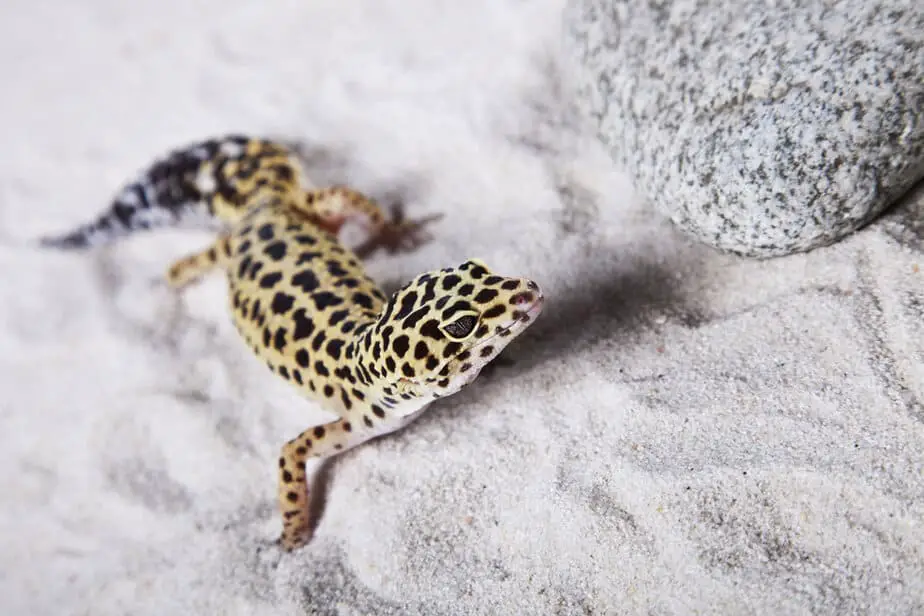
1. Paper Towels: Paper towels are a budget-friendly and readily available option. They are disposable and easy to replace. However, because they are thin, it’s crucial to monitor surface temperatures to ensure that the enclosure doesn’t become excessively hot.
2. Reptile Carpet: Reptile carpet is a washable alternative that often comes in packs of two, making it convenient to swap out for cleaning. However, it’s worth noting that leopard gecko toenails may occasionally get caught in the carpet threads.
3. Ceramic or Slate Tiles: These tiles come in various colors and styles, providing both aesthetic diversity and practicality. They are easy to clean and serve as excellent heat conductors, helping to maintain the right temperature gradient within the enclosure.
4. Roll-Out Vinyl Tile or Shelf Liner: This option is a versatile choice that offers ease of cleaning and comes in a wide range of colors and styles. It provides a clean and visually appealing substrate for your gecko.
5. Zoo Med Excavator: For those seeking a unique and naturalistic habitat for their leopard gecko, the Zoo Med Excavator is an intriguing option. It hardens when it dries, eliminating concerns about impaction. It allows you to craft tunnels and hides within the substrate, simulating a natural environment. However, it’s important to be aware that once it hardens, removing it from the enclosure can be challenging, though not impossible.
FAQs
Is sand safe for leopard geckos?
No, Sand is generally not recommended as the primary substrate for leopard geckos. It can lead to impaction if ingested and cause skin or eye irritation.
Do leopard geckos like sand or dirt?
Leopard geckos don’t have a preference for sand or dirt. They are more comfortable on non-loose substrates like reptile carpet or tiles.
When can I use sand for my leopard gecko?
Sand is not advisable as a substrate for leopard geckos at any life stage due to the risk of impaction.
Is it normal for leopard geckos to lick sand?
Yes, Leopard geckos may lick substrate, but it’s better to prevent access to loose substrates like sand to avoid ingestion.
Should geckos be on sand?
No, Leopard geckos should not be kept on sand as their primary substrate because of the potential health risks associated with impaction. Opt for safer alternatives like reptile carpet or tile.
Final Words
In my assessment, the use of sand as a substrate for leopard geckos presents a multifaceted issue. While it holds the promise of replicating their natural habitat, the potential pitfalls loom large. Chief among them is the risk of ingestion and subsequent impaction, which is particularly concerning for the younger geckos in our care.
Furthermore, the possibility of respiratory problems and the cumbersome task of maintaining a clean environment cannot be ignored. The absence of ample environmental enrichment also gives me pause.
Given these substantial risks, I find myself aligning with the advice of seasoned reptile enthusiasts and veterinarians who caution against using sand as a substrate for them.
Instead, opting for safer alternatives such as reptile carpets, ceramic or slate tiles, paper towels, or innovative products designed to facilitate naturalistic burrowing while mitigating impaction concerns seems like the prudent choice. Ultimately, the well-being and health of my pet remain my paramount concern, guiding my substrate choices in their enclosures.

